As ironic as it seems, this five-door hatchback has one unique feature that separates it from the pack.
Designed with sporty good-looks, engineered with innovative technology and equipped with a new range of engines, the new Astra looks set to excite Singapore’s compact car segment.
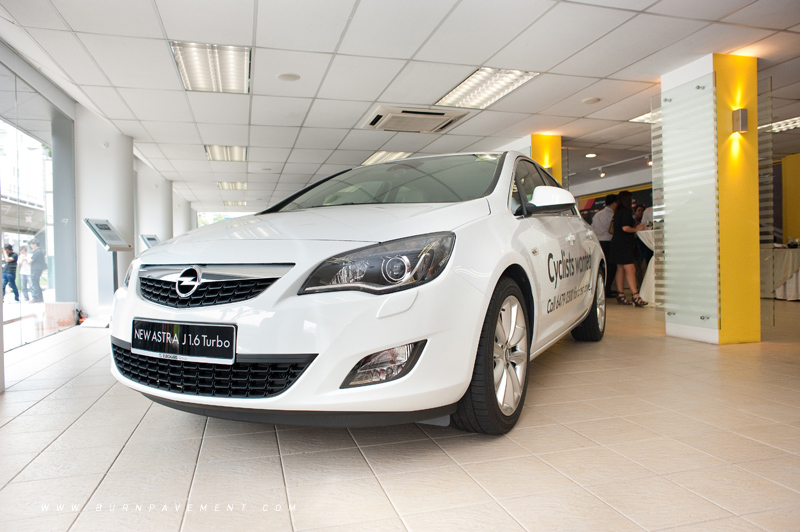
The new Astra applies the bold designs of the Insignia onto a hatchback form. Featuring a coupe-like silhouette, cab-forward stance, steeply-raked windshield and falling rear roof line, it certainly is a handsome-looking car.
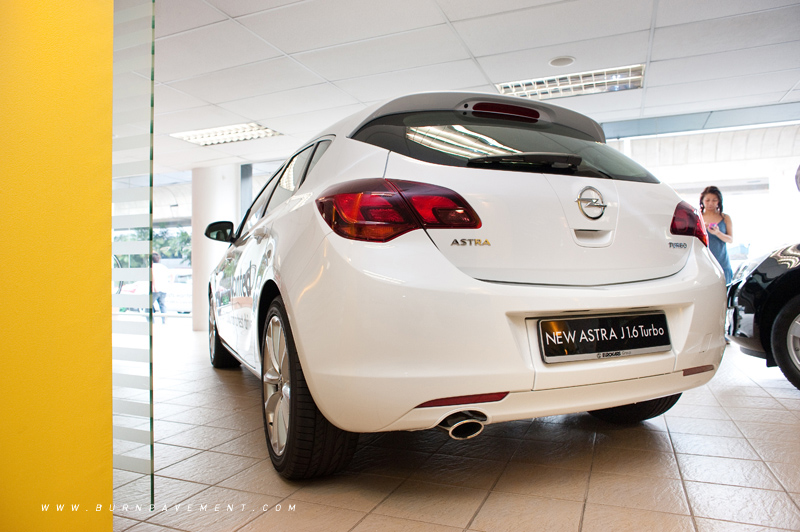
We find two new turbo charged engine variants, a 140 hp 1.4 litre with 200 Nm of torque and a 1.6 litre with 180 hp and 230 Nm of torque. Both engines feature water-cooled turbo chargers that are integrated into the exhaust manifold and located close to the engine for fast throttle response. The overboost function fitted to the 1.6 litre engine can briefly unleash 266 Nm of torque for up to five seconds.
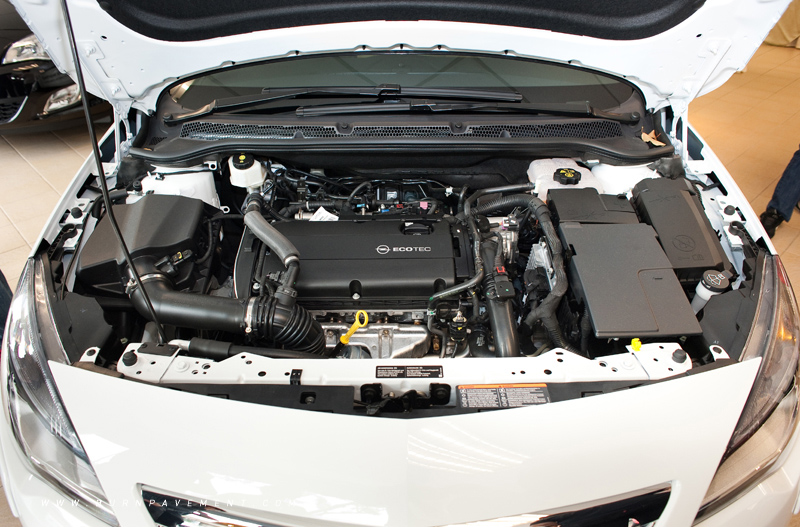
The 1.6 litre engine also propels the car from zero to 100 km/h in nine seconds and onto a top speed of 211 km/h, while the 1.4 litre variant takes 1.2 seconds longer to reach 100 km/h and tops out at 200 km/h. Both models are fitted with a six-speed automatic transmission that feature dynamic shift patterns and ActiveSelect which gives drivers manual control over the gears.
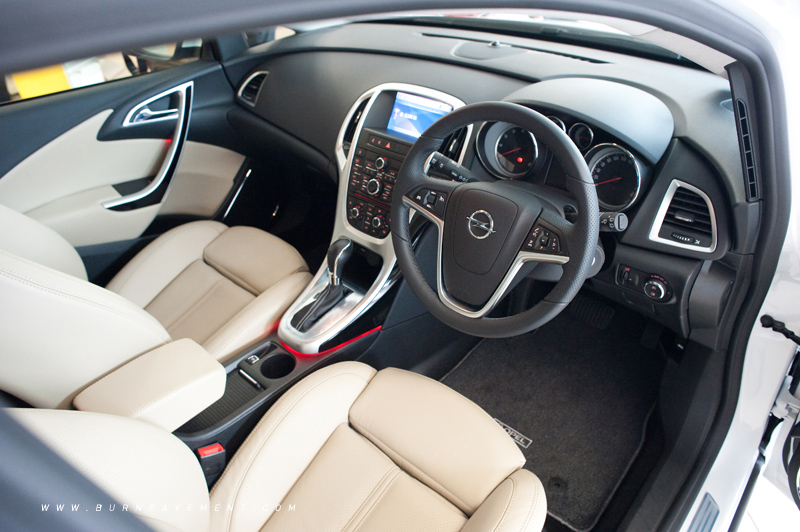
The interior is full of sweeping lines and curvaceous shapes. An Opel signature design feature is the wraparound wing shape of the instrument panel that integrates nicely into the doors. This helps to create a welcoming ambience that embraces the occupants.
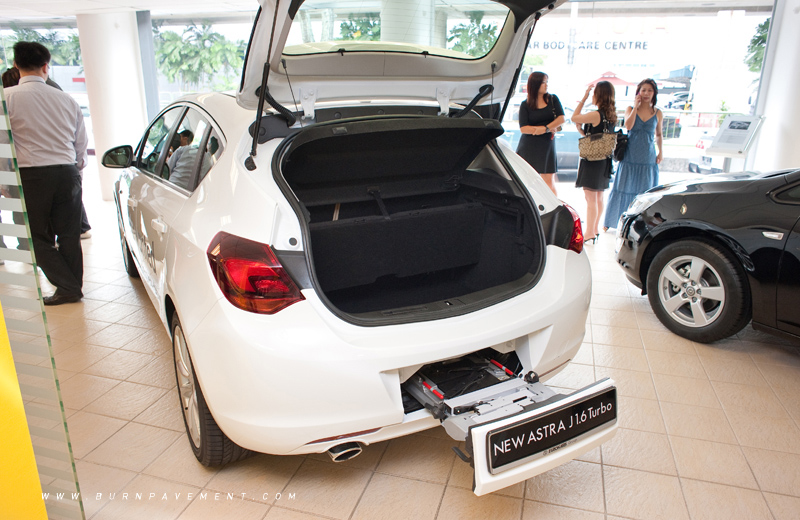
The new Astra is also the first car in Singapore to have a bicycle carrier integrated behind the rear bumper. It makes transporting bikes easy and convenient because it slides out of the rear bumper like a drawer when a release lever near the lip of the trunk is pulled. The boot allows easy storage of a wide variety of cargo with a boot floor that offers three levels of adjustment.
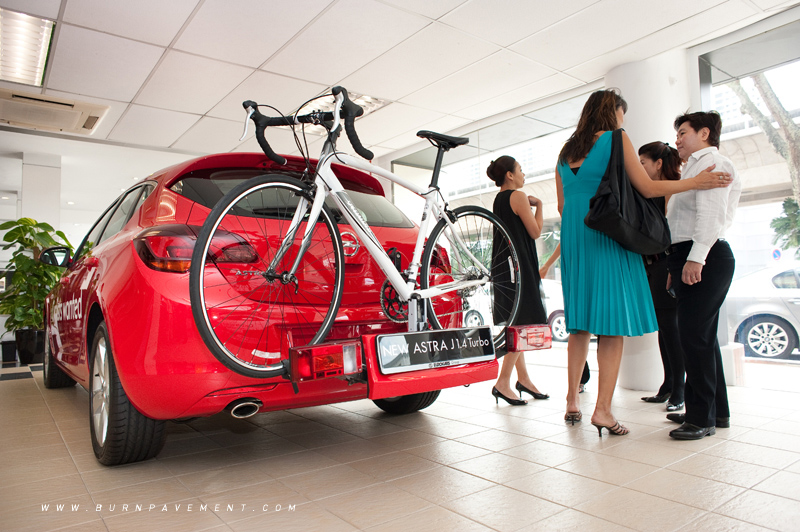
With a wider front and rear track and a longer wheelbase, the new car is said to deliver better handling and road-holding capability. Aided by a stiffer body structure than its predecessor, it also keeps noise and vibration inside the cabin in check.
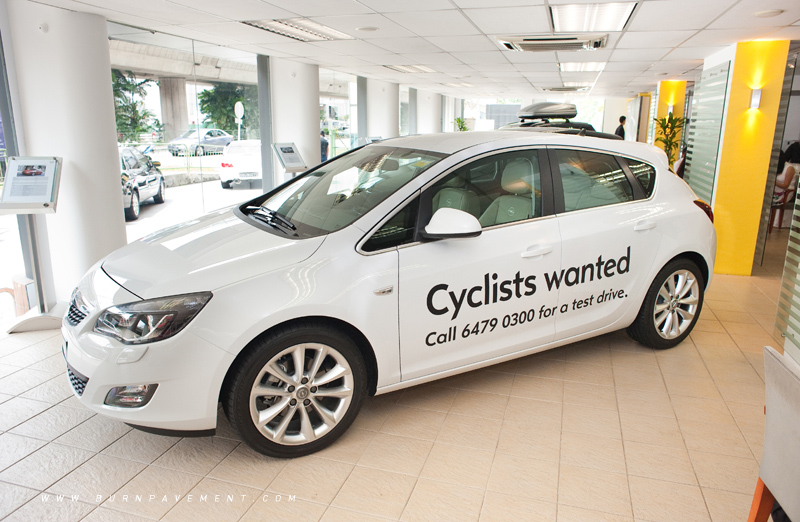
The new car comes with plenty of electronic aids too, including Cornering Brake Control (CBC) which varies braking power between all four wheels in order to keep the car stable, Cornering Torque Control (CTC) that minimizes under steer and Hydraulic Brake Fade Assist (HBFA) that compensates for possible brake fade in repeated heavy braking situations.
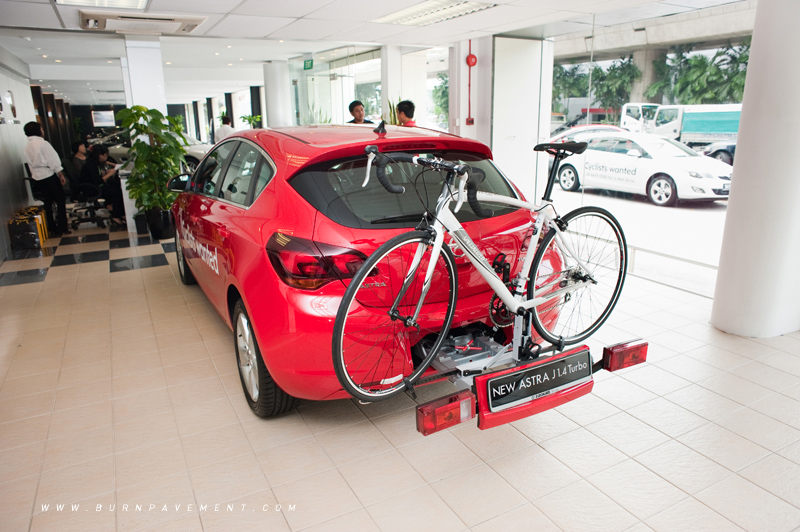
Other improvements include steering response and ride comfort. The steering assist motor is now mounted directly on the steering rack as opposed to the base of the steering column. While it has a traditional McPherson strut layout at the front, the rear features a torsion beam layout with a Watts linkage. This additional linkage helps the suspension cope with sideways force generated during cornering.
